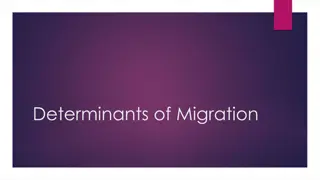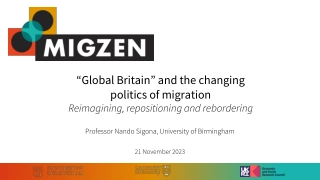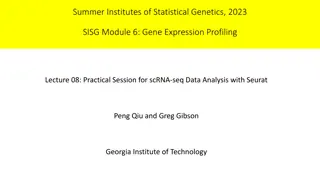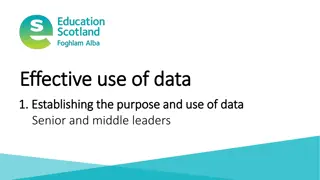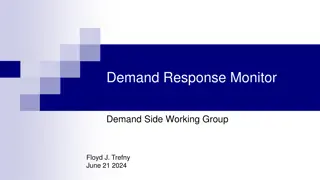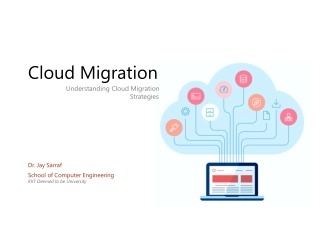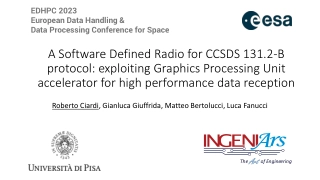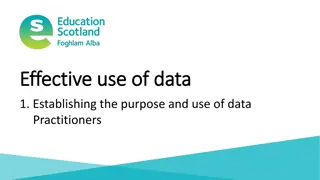Understand Role of ETL in Data Migration Extract, Transform, Load
Data migration is a critical process for businesses looking to upgrade their systems, move to the cloud, or integrate new applications. Central to this process is ETL: Extract, Transform, Load. This methodology is fundamental to ensuring that data is
Download Presentation
Please find below an Image/Link to download the presentation.
The content on the website is provided AS IS for your information and personal use only. It may not be sold, licensed, or shared on other websites without obtaining consent from the author. Download presentation by click this link. If you encounter any issues during the download, it is possible that the publisher has removed the file from their server.
Presentation Transcript
The Role of ETL in Data Migration: Extract, Transform,Load Data migration is a critical process for businesses looking to upgrade their systems, move to the cloud, or integrate new applications. Central to this process is ETL: Extract, Transform, Load. This methodology is fundamental to ensuring that data is accurately and efficiently migrated from one system to another. Here, we explore the role of ETL in data migration and highlight how Ask On Data, a leading data migration tool, leverages ETL to streamline thisprocess. Whatis ETL? ETL stands for Extract, Transform, Load. It is a data pipeline used to collect data from various sources, transform it into a format suitable for analysis, and load it into a data warehouse or othertargetsystems.TheETL processis divided intothree key stages: Extract: Data is extracted from various source systems, which can include databases, spreadsheets, cloud services, and more. This stage is crucial for gathering all relevant data, ensuring thatno criticalinformationis leftbehind. Transform: The extracted data is then transformed to fit the target system s requirements. This involves cleaning the data (removing duplicates, handling missing values), formatting it (standardizing date formats, aligning with schema requirements), and sometimes aggregatingor enriching it (combiningmultipledatasources,addingnew calculatedfields). Load: Finally, the transformed data is loaded into the target system, which could be a data warehouse, a new application, or a cloud storage solution. This stage must ensure data integrityand minimaldowntimefortheoperationalsystems. TheImportanceof ETL in DataMigration Data migration is not just about moving data; it s about ensuring that data remains accurate, consistent,and usefulafterthe move.Here s howETL playsa pivotalrole: Accuracy: ETL processes ensure that data is accurately transferred from source to target systems. By cleaning and validating data during the transform stage, errors are minimized. Consistency: Data from multiple sources often needs to be standardized. ETL processes ensure that the data is consistent in format and structure, making it reliable for analysis and businessoperations. Efficiency: Automated ETL tools can handle large volumes of data quickly and efficiently, reducingthetimeand effortrequired fordata migrationprojects. Scalability: As data volumes grow, ETL processes can scale to handle increasing amountsof data,ensuring thatmigrationprocessesremainrobustand efficient.
HowAsk On DataUtilizes ETL for DataMigration Ask On Data is a powerful data migration tool that leverages the ETL methodology to simplify and streamline the data migration process. Here s how Ask On Data incorporates ETL toensure seamlessdatamigration: Automated Extraction: Ask On Data automates the extraction process, connecting to a wide range of data sources, including databases, cloud services, and legacy systems. Thisensures thatall relevant datais gathered efficiently. Advanced Transformation: The tool offers robust transformation capabilities, allowing users to clean, standardize, and enrich data. Ask On Data s intuitive interface and powerful transformation engine ensure that data is formatted correctly and ready for loading. Efficient Loading: Ask On Data ensures that the loading process is efficient and minimizes disruption to operational systems. With features like real-time data synchronization and incremental loading, Ask On Data makes sure that data is up-to- dateand accuratein thetarget system. Data Quality Assurance: Ask On Data incorporates data validation and quality checks throughout the ETL process. This ensures that any errors are caught and corrected early, maintaininghigh dataintegrity. Scalability and Performance: Designed tohandle big data,Ask On Datascalesefficiently, making it suitable for organizations of all sizes. Its performance optimization features ensure fastand reliable datamigration,even with largedatasets. Conclusion The ETL process is essential for successful data migration, ensuring that data is accurately extracted, transformed, and loaded into target systems. Ask On Data leverages the power of ETL to provide a robust and efficient data migration solution. By automating and optimizing each stage of the ETL process, Ask On Data ensures that data migration projects are completed quickly, accurately, and with minimal disruption, making it an invaluable tool for modernbusinessesnavigatingthecomplexitiesofdatamigration.













